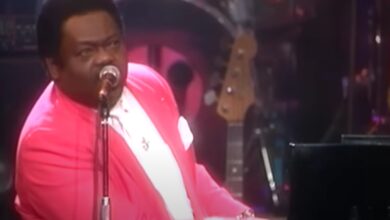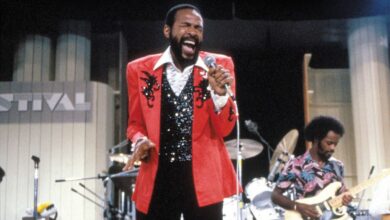Diana Ross’ ‘Ain’t No Mountain High Enough’ Becomes a Monumental Anthem in 1970
Released in July 1970, Ain’t No Mountain High Enough marked a defining moment in Diana Ross’ career, launching her as a solo superstar after years of dominance with The Supremes. Written by the legendary duo Nickolas Ashford and Valerie Simpson, the song had already been a hit in 1967 when recorded by Marvin Gaye and Tammi Terrell. However, in Ross’ hands, it was transformed into an expansive, dramatic, and deeply emotional performance that climbed to number one on the Billboard Hot 100 in September 1970. This ambitious reinterpretation not only solidified Ross’ place in music history but also redefined the song as a soul-pop masterpiece that continues to inspire generations.
By 1970, Diana Ross had already achieved phenomenal success as the lead singer of The Supremes, Motown’s most successful group of the 1960s. With a string of number-one hits, she had become the label’s most bankable star, but Berry Gordy, Motown’s visionary founder, had bigger plans for her. He envisioned Ross as a solo artist who could transcend R&B and soul, reaching broader pop audiences while maintaining her status as a fashion and cultural icon. Her departure from The Supremes in early 1970 was a major industry event, and Ain’t No Mountain High Enough became her defining statement as a solo performer.
The origins of the song date back to 1966 when Ashford and Simpson, then an emerging songwriting duo, wrote it as an uplifting duet. Marvin Gaye and Tammi Terrell’s version became an instant Motown classic, known for its tight harmonies and spirited energy. But when Diana Ross took on the song, Ashford and Simpson envisioned something far more ambitious. They reworked it into a cinematic, gospel-infused epic, giving Ross space to deliver a spoken-word introduction, building gradually into a powerful, orchestral climax.
Recording the track was an intricate process, with Ashford and Simpson guiding Ross through an entirely new vocal approach. Unlike the polished, controlled delivery of her Supremes hits, this version of Ain’t No Mountain High Enough required more dramatic phrasing, emotive narration, and a vocal build-up that was both theatrical and deeply personal. The production featured an expansive orchestral arrangement, layered backing vocals, and a pulsating rhythm section that gave the song an almost spiritual intensity. Motown’s house musicians, known as The Funk Brothers, provided the foundation, while the Detroit Symphony Orchestra’s string section added sweeping grandeur.
When the song was released, it took some time to gain traction. Initially, Motown executives were hesitant about its unconventional structure—especially the extended spoken-word intro, which was a departure from traditional radio-friendly formats. However, once it began receiving airplay, audiences were captivated. By September 1970, Ain’t No Mountain High Enough had reached number one on both the Billboard Hot 100 and the R&B chart, becoming Ross’ first solo chart-topper and earning a Grammy nomination.
Beyond its commercial success, the song had a profound cultural impact. Its lyrics, emphasizing perseverance and unbreakable determination, resonated with listeners far beyond the realm of romance. As the civil rights movement continued to shape America, the song took on a broader meaning—becoming an anthem of empowerment and resilience. Diana Ross, now emerging as an independent force in music, embodied these themes in both her vocal delivery and her growing presence as a symbol of Black excellence in popular culture.
For Ross, Ain’t No Mountain High Enough was more than just a hit—it was proof that she could thrive outside The Supremes. It led to a series of successful albums, movie roles, and collaborations that expanded her influence beyond the Motown sound. She would go on to dominate the 1970s with chart-topping singles, award-winning performances, and legendary live shows, but this song marked the moment where she truly stepped into her own as a solo icon.
The song also had a lasting effect on the genre, setting a precedent for longer, more dramatic soul and pop recordings. It paved the way for grand, orchestral soul arrangements that would be embraced by artists like Barry White, Isaac Hayes, and later, Whitney Houston. The spoken-word intro, initially considered risky, would become a signature element in other soul and R&B ballads of the decade.
Over the years, Ain’t No Mountain High Enough has been covered and reinterpreted by many artists, but none have matched the grandeur of Ross’ version. Her rendition remains the most recognized and celebrated, earning spots on countless greatest songs of all time lists and securing its place in film, television, and pop culture. From inspirational moments in movies to motivational campaign themes, the song has transcended its era and remains a powerful statement of perseverance.
At the time of its release, Ross was entering a new phase of her career, balancing music with acting and becoming a cultural trailblazer. Her role in Lady Sings the Blues just two years later would further establish her as an entertainment powerhouse, but Ain’t No Mountain High Enough was the song that proved she could stand alone as a solo star.
Decades later, the song’s legacy remains undeniable. It continues to be played at major events, from weddings to political rallies, and its uplifting message still resonates with new generations. Whether as a love song, an empowerment anthem, or a symbol of overcoming adversity, it carries a universal appeal that few songs achieve.
More than just a chart-topping hit, Ain’t No Mountain High Enough changed the landscape of pop and soul music. It took a beloved Motown classic and elevated it to new artistic heights, establishing Diana Ross as a force in her own right. Over fifty years later, the song’s message remains as powerful as ever—there is truly no mountain high enough to keep it from inspiring the world.



